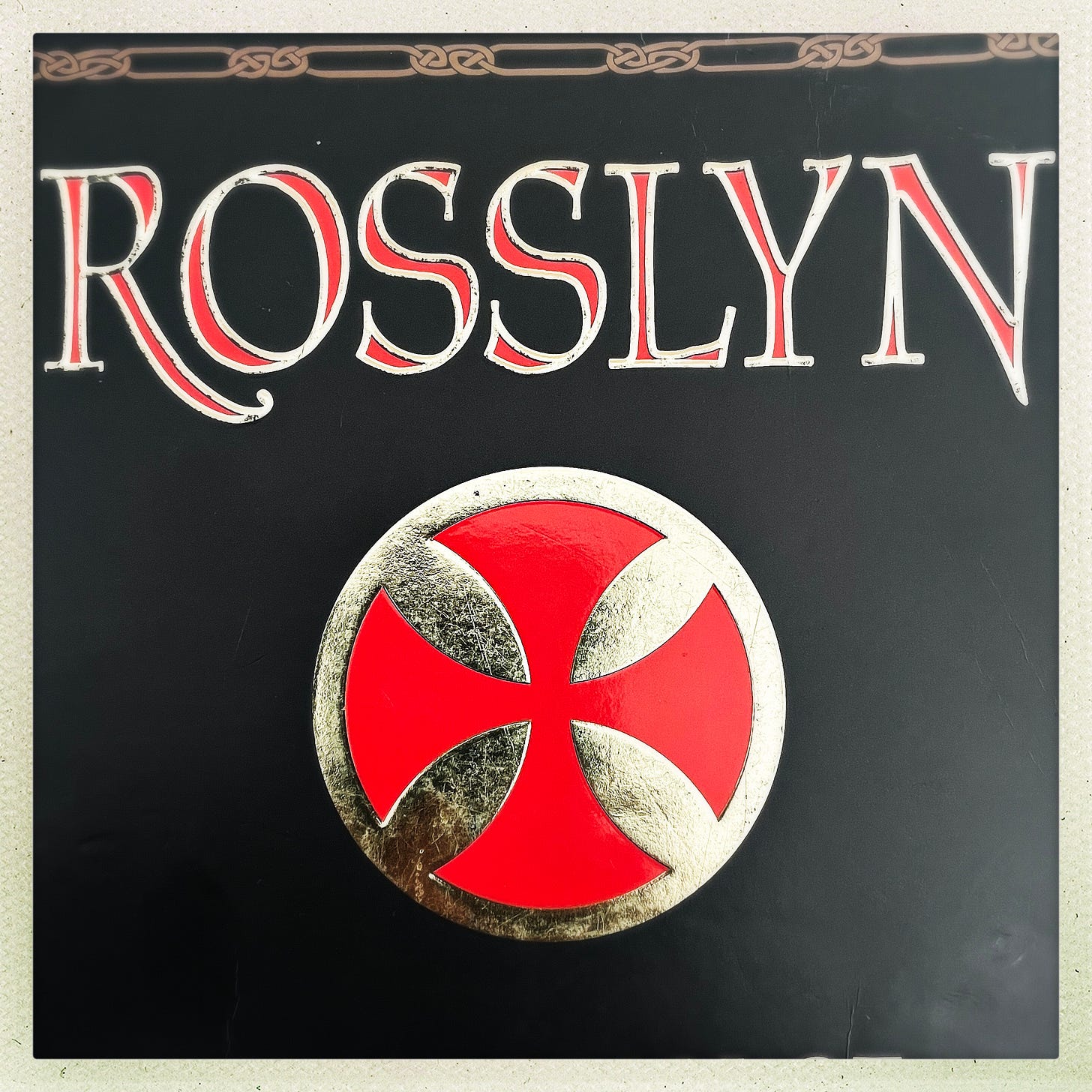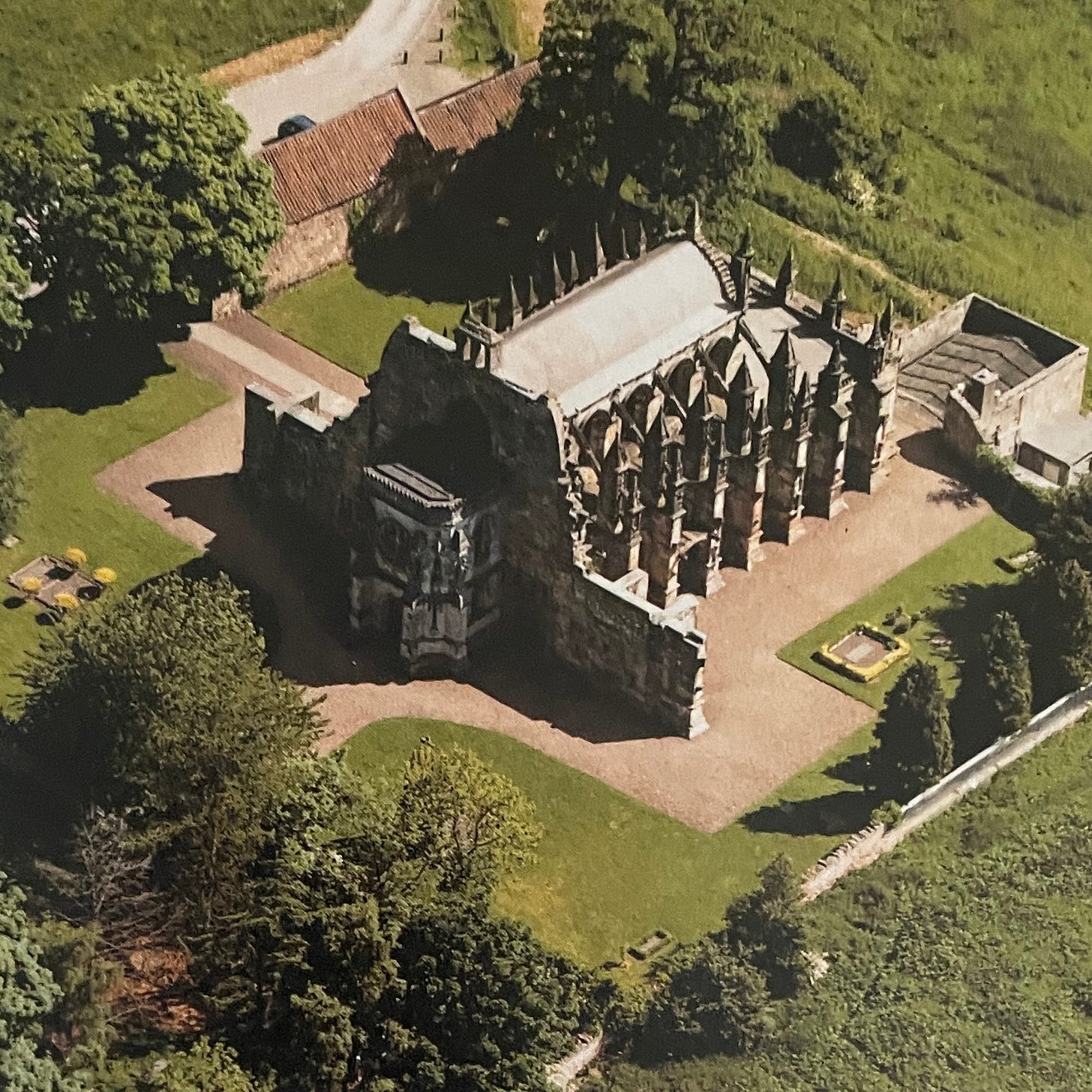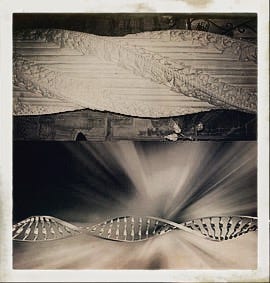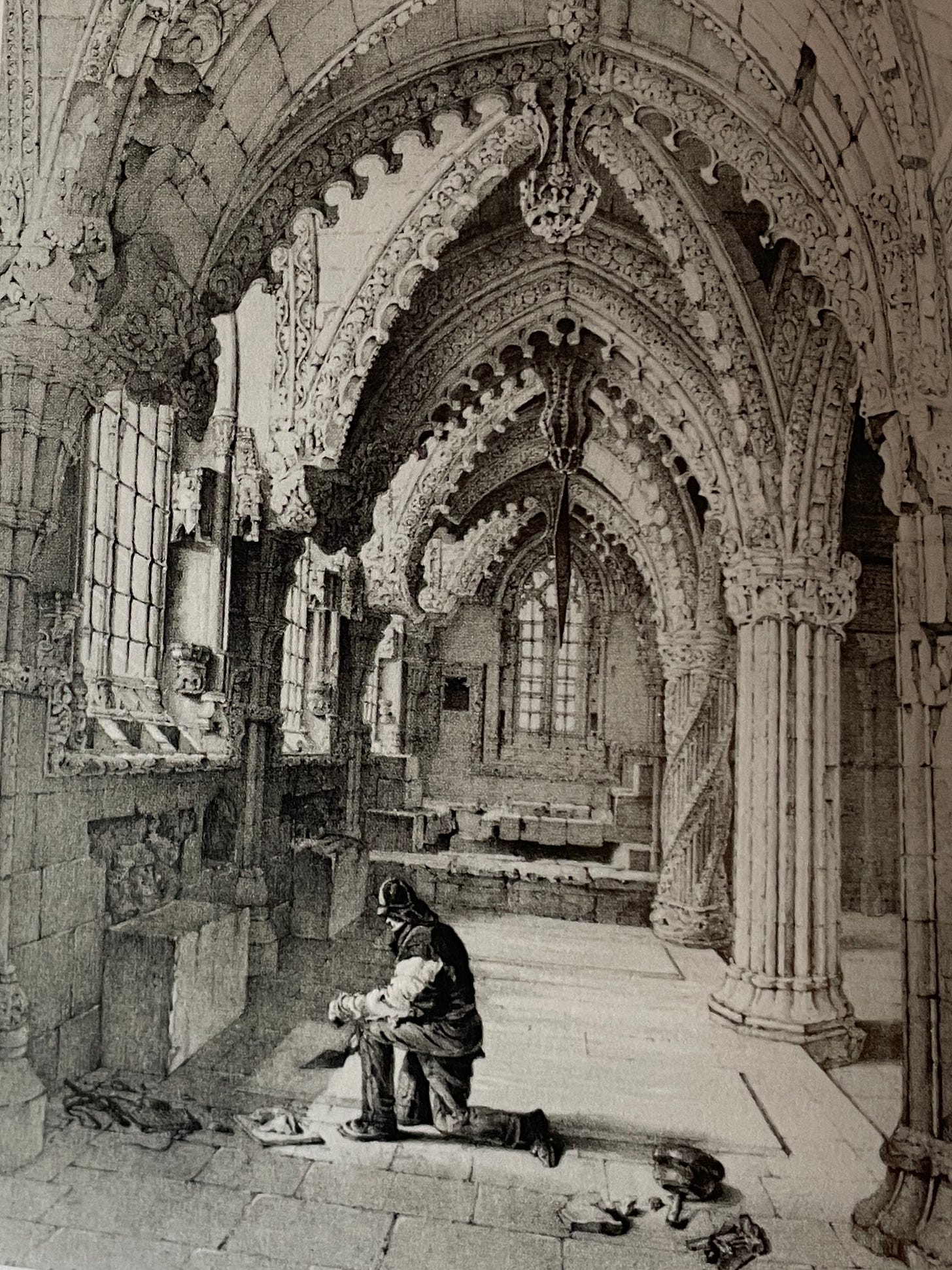Book: Rosslyn - Guardian Of The Secrets Of The Holy Grail (Tim Wallace-Murphy & Marilyn Hopkins)
Rosslyn Chapel: A Place Where Mystery and History Intertwine
Nestled in the quiet village of Roslin, just over seven miles from Edinburgh, Rosslyn Chapel stands as a beacon of mystery, spirituality, and exquisite craftsmanship. Its very name, derived from the Celtic words Ross (a rocky promontory) and Lyn (a waterfall), hints at the natural beauty and mystique surrounding this medieval marvel.
A Legacy of the St Clairs and the Knights Templar
Green Man
Founded in 1446 by Sir William St Clair, the last Prince of Orkney, Rosslyn Chapel is a memorial steeped in secrecy and legend. It is often linked to the enigmatic Knights Templar, and though the chapel itself remains unfinished, only the choir was completed and it holds an extraordinary level of artistic and architectural mastery. Its twelve-pointed arches are believed to symbolize the zodiac, while its intricate carvings, from celestial stars to lilies and roses, weave a tapestry of medieval symbolism rarely seen elsewhere in Britain.
The Enigma of the Apprentice Pillar
Book: Rosslyn Chapel by The Earl of Rosslyn
One of the chapel’s most captivating features is the Apprentice Pillar, an exquisitely carved column entwined with spiralling vines. Some believe its helical design echoes the double helix of DNA, though its true meaning remains elusive. One compelling theory links the pillar to the mythical Tree of Life, a concept found across various traditions.
In Christianity and Judaism, the Tree of Life represents eternal existence, rooted in the Garden of Eden.
In Norse mythology, Yggdrasil, the cosmic tree, connects heaven, earth, and the underworld, while dragons gnaw at its roots, seeking to destroy it.
Rosslyn Chapel, built by a man with Norse ancestry, may subtly pay homage to both traditions. Biblical carvings surround the pillar, reinforcing its Christian significance, while the eight dragons at its base whisper of ancient Norse cosmology. It’s as if the chapel itself serves as a bridge between different worlds, both spiritual and mythological.
The Double Helix and the Harmony of Nature
According to legend, the design of the Apprentice Pillar came to the apprentice in a dream. Many have noted its striking resemblance to the double helix of DNA, though this does not necessarily mean that the builders of Rosslyn had knowledge of DNA itself. Instead, it suggests that the helix is a fundamental geometric principle woven into nature’s design. Nature employs the helix structure for both functionality and beauty, and the presence of this form in the pillar highlights the chapel’s deep connection to the natural world.
This realization leads to a fascinating possibility that DNA, music, and geometry are intertwined in a cycle of proportion and form. The designers and composers of Rosslyn seemed to have understood these principles, as reflected in the cymatic musical scores found within the chapel’s intricate carvings. William St Clair and Sir Gilbert Haye may have tapped into the universal language of sound and vibration, using cymatics to express divine harmony.
All of nature is an expression of form, and that form, we now understand, is constructed by sound and vibration at every level of existence. From our genetic code to the spiralling arms of galaxies, the helix appears as a recurring symbol of the fundamental building blocks of life, an encoded pattern that governs the structure of reality itself.
The Knights Templar and the Secrets of Rosslyn
The Knights Templar were originally formed to protect pilgrims in the Holy Land, taking vows of poverty and obedience in 1119. But their mission has long been shrouded in mystery. Some believe their true purpose was to unearth and guard the secrets of Solomon’s Temple, possibly uncovering hidden knowledge or treasure.
When the Templar Order was suppressed in 1312, many of its members were arrested and executed, yet speculation persists that some escaped to Scotland. Legends tell of a Templar fleet sailing to Scottish shores, where they were welcomed by Robert the Bruce and may have even fought at the Battle of Bannockburn. Though historians argue there’s no solid evidence of their participation, the story endures, adding to the Templar mystique.
The connection between Rosslyn Chapel and the Templars is equally compelling. Though the chapel was built long after the Order’s dissolution, some claim that its carvings and architectural style reflect deep Templar influence. The Sinclair family, founders of Rosslyn, have long been linked to the Templars, with some suggesting that Sir William Sinclair designed the chapel using sacred geometry modelled on Solomon’s Temple. Templar graves, cryptic carvings, and the belief that hidden messages are encoded in the chapel’s stonework have only fueled speculation.
But is there truth to these claims? Some argue that many of the symbols attributed to the Templars are biblical in origin and that the supposed Templar graves may have been misidentified. Still, the possibility of a hidden connection between the Templars and Rosslyn remains one of history’s most tantalizing mysteries.
YUSH2K
20 years ago, the Yush2K / Blackanised collective made some timeless music. As well as collaborating on music, I used to train in martial arts and go on treks with AJ the Head of Yush2K.
We went up to the chapel and Glen many times and recorded ‘Rosslyn’ in the small village of Roslin, Midlothian.
I’ve recently been reconnecting with old mentors and collaborators.
🎧 Listen to ‘Roslin’ and other tracks on the Yush2K Bandcamp: YUSH2K
Part of a Code
I’ve always been intrigued by synchronicity, patterns, and hidden codes. It seems far from coincidence that the first cloned sheep, Dolly, was created at the Roslin Institute, the first mammal cloned from an adult cell, born on July 5, 1996. The world’s most famous sheep, named after Dolly Parton, emerged from a place with an undeniable link to Rosslyn Chapel. Is this merely happenstance, or is there something more at play?
Cloning may one day serve to preserve endangered species or even revive extinct ones, further entangling modern science with ancient mysteries.
The link between Rosslyn Chapel and codes does not end there. In The Da Vinci Code, the protagonist, Robert Langdon, finds himself at Rosslyn after deciphering a hidden message within an ancient artefact. Alongside Sophie Neveu, he follows a trail across Europe, seeking the truth about the Holy Grail, the Knights Templar, and the power of the Rose. At Rosslyn, they encounter a secretive group that has protected the Grail’s secret for centuries.
The novel presents a tantalizing idea that the Grail is not a physical chalice, but Mary Magdalene herself, carrying the bloodline of Jesus Christ. According to the book, Mary was once buried at Rosslyn Chapel, and Sophie Neveu is revealed to be a living descendant of Christ. Is this merely a well-crafted work of fiction, or is there truth woven within its pages?
Debates rage on. Some dismiss Dan Brown’s book as mere entertainment, a blend of fact and fiction designed to blur the lines between history and storytelling. Others argue that the novel’s ideas hold kernels of truth, hidden in plain sight. Was Rosslyn Chapel chosen for its role in The Da Vinci Code simply because it suited the narrative, or does its connection to hidden knowledge and sacred geometry make it an inevitable piece of the puzzle?
The Tragic Tale of the Master and the Apprentice
A legend tied to the Apprentice Pillar adds another layer of intrigue. According to the story, a Master Mason, seeking to perfect the pillar’s design, travelled abroad to study the grand cathedrals of Europe. While he was away, an apprentice had a vision of how to carve the pillar and completed it to breathtaking effect. When the Master Mason returned and saw the young apprentice’s masterpiece, envy consumed him. In a fit of rage, he struck the apprentice down, killing him instantly.
As punishment, the Master Mason was hanged, and the chapel’s craftsmen carved a stone effigy of the apprentice’s head complete with a wound on his forehead, placing it within the chapel as an eternal reminder of the tragedy. Another carving of the Master Mason was positioned so that his gaze would forever rest upon the pillar, a silent penance for his crime.
Is this tale true? Perhaps not, the story of a jealous master and a slain apprentice appears in many medieval churches. However, its long-standing association with Rosslyn, dating back to at least the 17th century, keeps the legend alive.
The master and apprentice trope can be found in many tales, not least the Star Wars movies.
When I left you I was but a learner, now I am the master.
A Chapel of Mystery and Wonder
The Retro Choir, Rosslyn Chapel
Rosslyn Chapel is more than just a church; it is a masterpiece of human ingenuity, a place where history, mythology, and spirituality intertwine. Its unique energy, breathtaking carvings, and age-old mysteries continue to captivate scholars, seekers, and visitors alike. Whether one comes in search of historical truth, spiritual enlightenment, or simply to admire its beauty, Rosslyn Chapel remains a portal to the past, whispering secrets yet to be fully understood.















